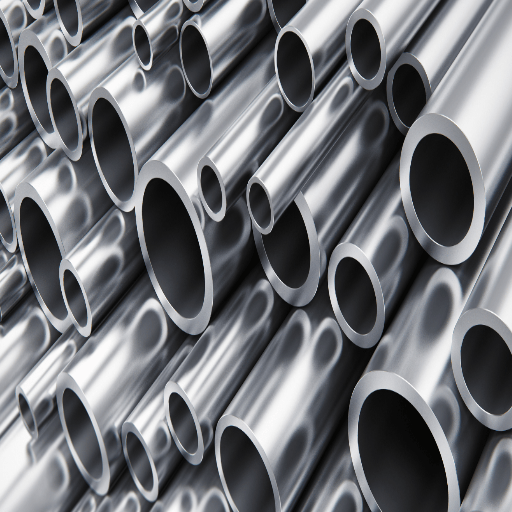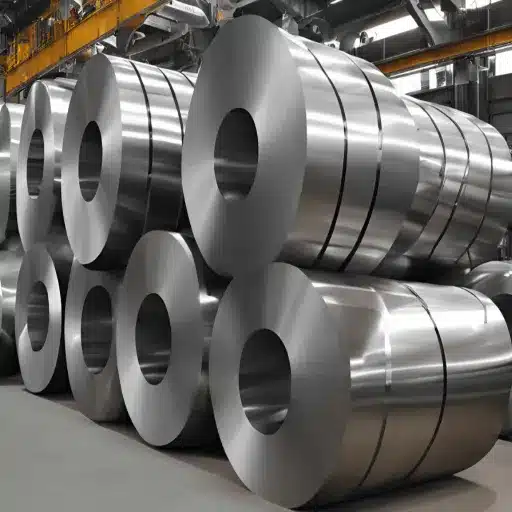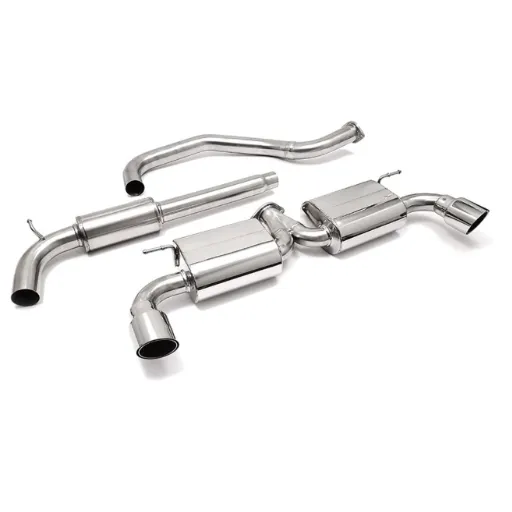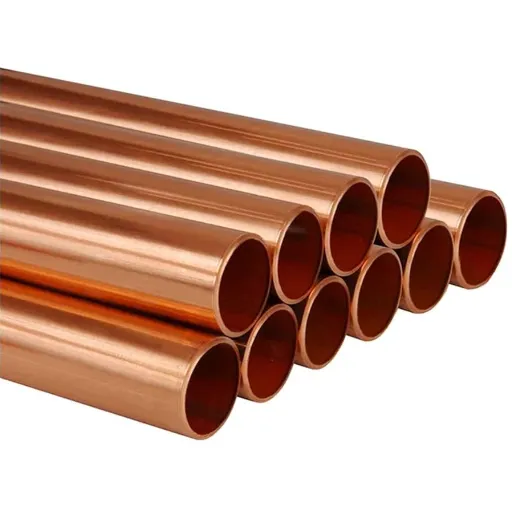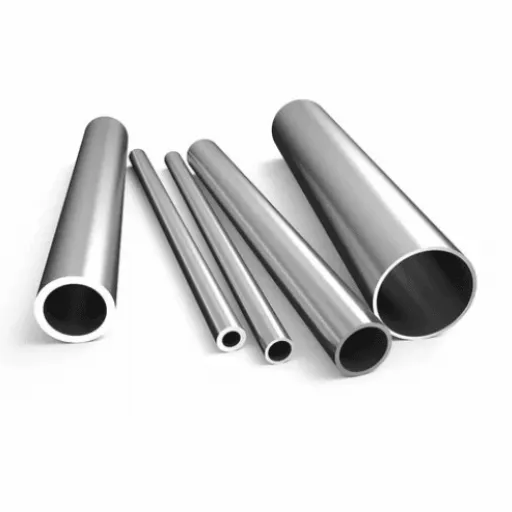Stainless steel industrial pipes are a critical component in a wide range of industries, from construction and manufacturing to energy and chemical processing. Renowned for their durability, corrosion resistance, and versatility, these pipes play a vital role in ensuring the integrity and efficiency of countless systems worldwide. This comprehensive guide aims to unlock the complexities of stainless steel industrial pipes by exploring their key properties, common applications, and the important factors to consider when selecting the right pipe for your specific needs. Whether you are an engineer, a procurement specialist, or simply curious about the innovations driving industrial infrastructure, this article will provide you with actionable insights into this essential aspect of modern industry.
What Are the Key Features of Stainless Steel Pipe?
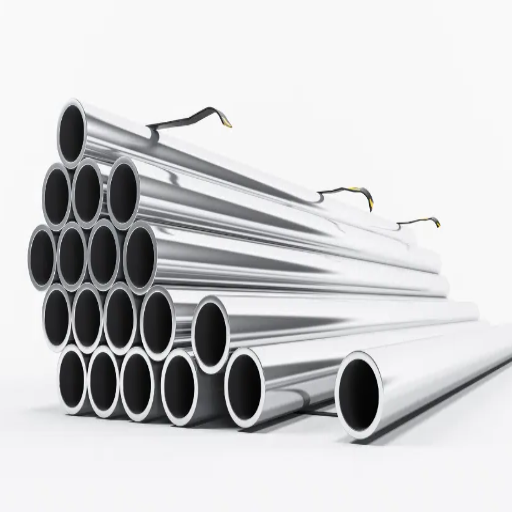
Understanding the Grade of Stainless
Each particular grade and type of stainless steel is defined by its distinct chemical composition and mechanical properties, which dictate its performance in various applications. For instance, two of the most popular stainless steel grades are 304 and 316. Each grade is different and has different characteristics, such as resistance to corrosion, tensile strength, and tolerance to extreme temperatures.
An example is grade 304 stainless steel, which is an austenitic alloy. Grade 304 stainless steel is recognized for its high versatility, excellent corrosion resistance, and affordability. It is often used in kitchen equipment, automotive trim, and piping because of its long-term durability and low maintenance. Grade 316 is also popular as it contains additional molybdenum, which enhances its resistance to chlorides and harsher environments, making it ideal for marine applications, pharmaceutical manufacturing, and chemical processing.
When choosing the correct stainless steel grade, it is important to assess the operating conditions, such as the presence of a corrosive agent, extreme temperatures, and structural requirements. Considerations such as weldability and machinability also need to be taken into account.
The Importance of Corrosion Resistance
As a property in different industries, corrosion resistance directly influences the functional capacity, lifespan, and safety of machinery and civil infrastructure. Materials that help in resisting corrosion can greatly reduce the chances of structural breakdown, support dependable operations throughout, and lower maintenance and repair expenditures in the long run. This is notably important in marine engineering, petrochemical processing, and food production industries, which, due to the harsh environments, pose a risk of rapid material erosion.
The chromium content in stainless steel is responsible for corrosion, and, therefore, its chromium content is reactive with oxygen, creating a thin passive oxide layer on its surface. This layer, also known as the passive layer, prevents the metal underneath the oxide surface from further oxidation and degradation. Protection from corrosion in extreme environments like acid, extreme temperature, or high salinity is provided by additional elements such as molybdenum, nickel, or nitrogen.
By focusing on material selection based on corrosion resistance, organizations can more easily comply with safety requirements and extend the life of their important assets. In addition to these, materials that resist corrosion help improve overall process efficiency by reducing downtime that comes with equipment failure as well as containing environmental threats from spills or pollution. Therefore, to improve system design that emphasizes safety, sustainability, and cost, corrosion resistance should be considered the primary criterion along with system efficiency.
Comparing Welded and Seamless Options
Cost and performance, along with application requirements, play an important role in choosing either welded or seamless pipes. The production of seamless pipes involves extrusion or piercing processes, which create a consistent structure lacking weld seams. They also function optimally for applications that must endure severely high pressure or extreme temperatures because they are subjected to far greater levels of stress and are less likely to have any structural weaknesses.
Welded pipes, on the other hand, are produced from rolling and welding metal sheets or strips. For the cases where resistance to high pressure is not critical, they are a reasonably priced option. With the advances in welding technologies, modern welded pipes do possess some level of structural integrity and reliability, and even perform reasonably well under normal conditions. Since they come in a wide variety of diameters and lengths, they are easier to find. Therefore, they are a good option for large or non-critical projects.
The choice of welded versus seamless pipes is based on the individual needs of the system. Regarding the oil and gas industry, chemical processing, and power generation, they tend to lean toward durable construction, in which case, seamless pipes are likely to be the choice. Products for less demanding conditions would be of welded construction since they are more economical and perform adequately.
How Does 304 Stainless Steel Compare to Other Grades?
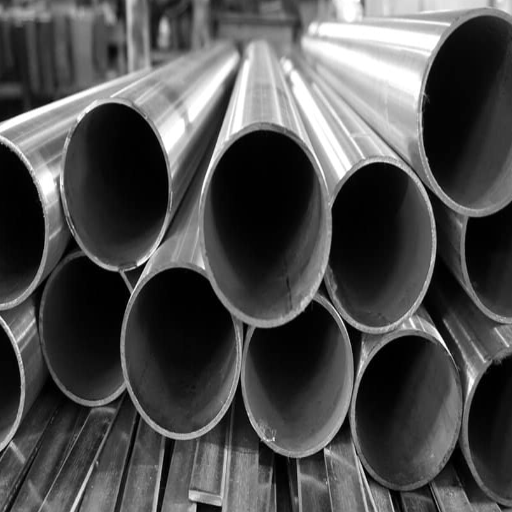
Advantages of 304 Stainless Steel Pipe
The 304 stainless steel pipe is praised for its corrosion resistance and its functionality in a variety of settings, including ones enveloped by moisture, chemicals, and even saltwater. The chromium and nickel elements within it enable the formation of a protective oxide layer, which prevents oxidation and corrosion while improving durability and reliability.
Its high and low temperature performance is yet another key advantage. Its exceptional low and high temperature resistance makes 304 stainless steel an indispensable material in the food processing, chemical transport, and construction industry. Moreover, its exceptional tensile strength reinforces its ability to handle mechanical stress in harsh operational conditions.
Last but not least, it is valued for its ease of fabrication and cleanliness. The 304 stainless steel pipe can be welded, polished, and even shaped seamlessly, achieving high versatility tailored to specific requirements. For sanitary applications such as medical equipment, its non-reactive surface makes it contamination-free. In total, these allow 304 stainless steel to be a reliable and cost-effective solution for critical applications.
Differences Between 304 and 316 Stainless Steel
The main difference between 304 and 316 stainless steel is chemical composition: 316 has molybdenum, which improves its ability to resist corrosion, particularly in salt or chloride-rich environments, while 304 does not.
| Aspect | 304 | 316 |
|---|---|---|
|
Additive |
None |
Molybdenum (2%) |
|
Rust Resist. |
Moderate |
Superior |
|
Price |
Lower |
Higher |
|
Temp Limit |
1450°C |
1400°C |
|
Durability |
500-700 MPa |
400-620 MPa |
|
Usage |
General |
Marine/Chemical |
|
Weight |
8.00 g/cm³ |
8.00 g/cm³ |
|
Thermal Exp. |
17.2 x10⁻⁶/K |
15.9 x10⁻⁶/K |
|
Surface Hard. |
215 HB |
149 HB |
Applications for 304 Stainless Steel in Industry
The corrosion resistance, versatility, and high ductility of 304 stainless steel make it one of the most widely used alloys in use. It finds its primary applications in the construction, food processing, chemicals, and medical equipment industries.
- Construction and Architecture
Due to the alloy’s aesthetic appearance and durability, it is widely used in facades, railings, roofs, and other structural components. On top of all that, the alloy’s environmental endurance ensures dependable performance in outdoor and urban infrastructures.
- Food Processing and Culinary Tools
About hygiene, resistance to acids, and ease of cleaning, 304 stainless steel is extensively used in sinks and other food-grade machineries like pots and pans, as well as in food and drink production lines. The alloy’s inertness guarantees safety when dealing with acidic or corrosive food substances.
- Chemical and Pharmaceutical Industries
The non-toxic nature of the alloy makes it applicable in pharmaceutical instruments and storage vessels, while its resistance to oxidation and various chemical compounds allows its use in the construction of storage tanks, piping systems, and processing vessels in chemical industries.
- Medical Equipment
The stainless steel grade 304 is used for the manufacture of surgical instruments, beds, and other medical devices because of its rigorous sanitation requirements. Its biocompatibility and ability to withstand repetitive sterilization cycles further enhance its use in healthcare settings.
- Transportation and Automotive Engineering
Due to the material’s attributes, including its strength-to-weight ratio and its hydraulic and chemical corrosion resistance, it is widely used in the fabrication of fuel tanks, exhaust systems, and structural parts of automotive, marine, aerospace, and railway vehicles.
Due to the synergistic environmental resiliency, mechanical traits, cost effectiveness, and augmenting stainless steel 304’s astonishing properties, steadfastness, and ingenuity across varying domains.
What Are the Specifications for Industrial Stainless Steel Tubing?
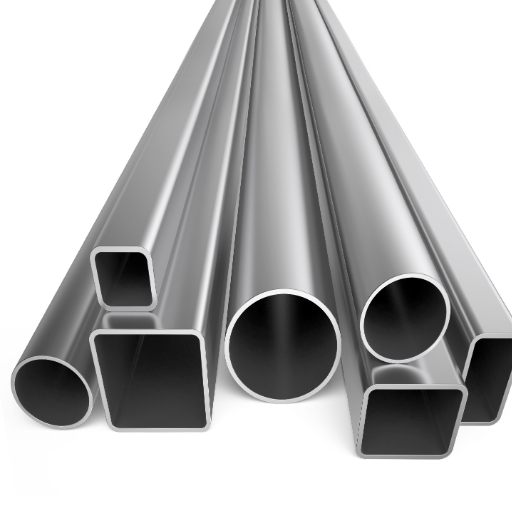
Understanding Nominal Pipe Size and Wall Thickness
Nominal Pipe Size (NPS) is one of the most commonly used metrics in the United States for pipes since it specifies their diameter. However, the NPS value doesn’t seem to exactly match the pipe’s outer diameter (OD), with an example being the NPS 2 pipe that has an OD of 2.375 inches, larger than 2 inches.
The pipe’s schedule (SCH) defines its wall thickness. Schedule defines wall alignment to diameter, so greater schedules mean thicker walls. For example, an NPS 2 pipe with a Schedule 40 will have a higher wall compared to the same pipe with a Schedule 80 designation. Choosing the correct thickness affects the rating the pipe can take; its pressure, strength, and durability all have to do with operating conditions like temperature, chemicals, and wear.
By integrating NPS and SCH, appropriate pipe selection for industrial functions that meet system specifications and regulatory codes is made easier for engineers and manufacturers.
Choosing the Right Pipe Products for Your Project
The first thing I would take into consideration in fulfilling a project in scope and pipe products selection is the precise value of operational parameters like pressure, temperature, and type of fluid or gas that is to be transported. A clear understanding of the aids in defining the type of material needed; steel, PVC, copper, or any other which is highly resistant to corrosion and environmental or mechanical stress.
Then, I would take into consideration the pipe’s dimension, defined in terms of nominal pipe size (NPS) and schedule. By determining the correct level of size and thickness, I ensure that the pipe does not go lower than or above the set pressure and flow capacities while retaining integrity over the entire lifespan of the system. This step eases power and resource consumption during operation while eliminating overdesign.
For the specific system or environment’s criteria, like corrosion resistance, weight, and ease of installation, I would finally consider other additional factors. Selecting the appropriate companion parts, like fittings and coatings, is just as important for achieving optimal integration and reliability within the piping system. Following this method enables me to pick the appropriate pipe products for the project by balancing their efficiency and monetary value.
Why Is Corrosion Resistance Important in Steel Pipes?
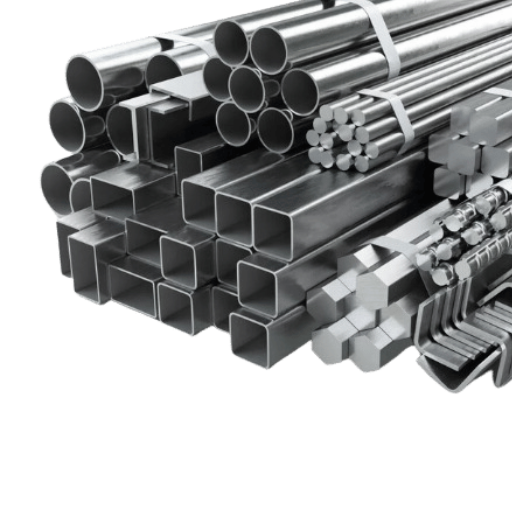
The Role of Alloy Composition in Corrosion Resistance
The alloy composition of steel pipes heavily influences the pipes’ ability to resist corrosion. Additional alloying elements are used to improve the steel’s resistance to chemical and environmental corrosion factors. Each element ensures the alloy has greater toughness, which enhances the life span of the piping system.
- Chromium (Cr)
Chromium assists in the development of the steel’s passive oxide layer, which prevents oxidation and corrosion. With chromium addition over 10.5%, stainless steel and its alloys with acid and chemical resistance are produced.
- Nickel (Ni)
Nickel improves the corrosion resistance of steel, particularly in acidic or caustic environments, while also increasing the strength and toughness of the alloy. Harsh marine or industrial environments frequently expose nickel-based alloys that sustain saltwater exposure.
- Molybdenum (Mo)
With this element, the resistance to crevice and pitting corrosion is enhanced, especially in the presence of chlorides. To guarantee exposure of steel pipes to salt water and other chemicals, molybdenum is alloyed in varying degrees.
- Copper (Cu)
Copper helps prevent the corrosion in steel that occurs due to the atmosphere and mildly acidic solutions. Copper is particularly useful in minimizing the damaging effects of corrosion due to sulfur dioxide and in marine environments.
- Silicon (Si)
Silicon increases the oxidation and high-temperature corrosion resistance of steel. It is commonly added to alloys for high-temperature applications such as parts for exhaust systems and heat exchangers.
These alloying elements, used in specific ratios, improve the corrosion resistance of steel pipes based on the intended use. Steel is correlated to project specifications, wherein engineers can systematically obtain reliable, enduring piping structures.
Maintenance Tips for Stainless Pipe
In order to maintain the structural strength, performance, and beauty of pipes made from stainless steel, their upkeep must be properly cared for. Periodic cleaning of the pipes prevents obstruction of the protective oxide layer blanket that is formed naturally, hence, surface non-abrasive cleaning agents and tools should be employed for best results, which ensures no surface damage is inflicted.
Identifying contour pitting or crevice corrosion marks should be done regularly because it can accelerate further damage. Such areas should go through passivation processes where the protective layer is renewed or damage is mitigated.
In industrial use, temperature and environment monitoring are crucial. The presence of aggressive chemicals and high temperatures is are example of elements that can lead to stress corrosion cracking. The risk of failure is significantly lowered by keeping the piping system within the required pressure and temperature ratings.
Last but not least, creating a record of documents that are kept in cleaning routines for the inspection report, and repairs done during the period, provides an accurate record of the status of the pipes and the entire system. This shifts the focus towards prevention and maximizes the uptime of bubble systems made from stainless steel alloys.
Where Can I Find a Reliable Pipe Supplier?
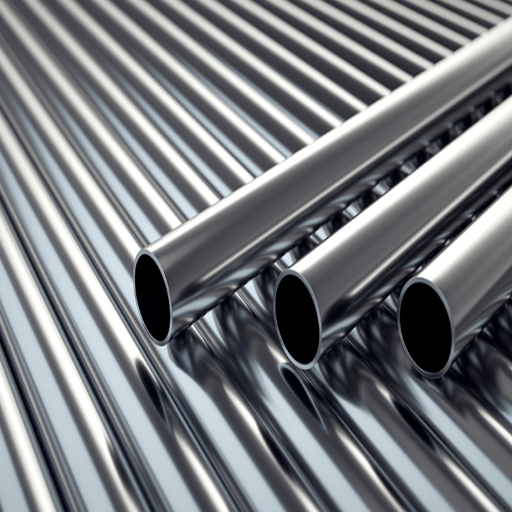
Factors to Consider When Choosing a Supplier
For me, choosing a trustworthy pipe supplier revolves around the factors of quality, service, and price. First, I look at the supplier’s product and their experience in the industry. For critical systems, such as those using stainless steel alloys, it is imperative that the supplier’s pipes meet every standard for durability, corrosion resistance, and operational limits, which include high pressure and temperature. This guarantees that the pipes are not just functional, but safe for prolonged use.
Next, I check if the supplier has sufficient inventory and if they can tailor their products for certain specific project needs. A reliable vendor like Stainless Steel Co. has numerous options in terms of pipe sizes, grades, and alloy compositions. This flexibility means that I won’t have to juggle multiple suppliers, which is logistically inefficient and time-consuming, because I can get all the materials I need from one trusted supplier.
Finally, customer service and technical support have a major impact on my decision. A good supplier will deliver on time, provide necessary product information, and have a support staff that is readily available to help with any issues or special needs. Stainless Steel Co. does exceptionally well in these aspects because they have the needed skills and reliable service, which makes them my first option when I need high-quality stainless steel pipes.
Benefits of Buying from a High-Quality Stainless Steel Pipe Dealer
- Wonderful Material Quality
Suppliers of stainless steel pipes pay attention to ensure that their products are manufactured to industry standards for corrosion, breakage, and extreme wear and tear. Premium materials significantly increase the life and functioning of the pipes, which is necessary for operational reliability when subjected to demanding conditions, such as high-pressure chemical reactions or severe chemical exposure.
- Compliance with Industry Requirements
Pipes offered by reputable dealers are certified and conform to ASTM or ASME standards. These certifications guarantee uniformity in yield point, dimensional accuracy, and alloy percentage, which is vital for technical works in building, manufacturing, and petrochemical industries.
- Warranty
The leading dealers usually furnish engineers and project managers with extensive technical documentation, material test reports (MTRs), and maintenance guidance tailored to the project, such as installation and maintenance guides tailored to specific applications. Such a backup is crucial for engineers and project managers who seek maximum project efficiency while maintaining compliance.
- Long-Term Value
The initial investment in high-quality stainless steel pipes is greater than low-quality alternatives. However, stainless steel pipes that are more durable lessen long-term replacement, maintenance, and repair expenses. In industrial projects, the expenditure on unencumbered performance saves a lot of money due to increased project reliability.
- Customizability Options Offered
Reputable Vendors and Suppliers can construct tailored solutions precisely as per particular project requirements. These pu tn options range in characteristics such as grade, finishes, and even customized dimensions, enabling engineers to select the precise operational outcomes that are optimal.
- Eco-Friendly and Recyclable Options
A number of suppliers of high-quality do offer sustainable solutions, such as products manufactured from recycled grade stainless steel or employing less invasive environmental processes. As for stainless steel, it is regarded as 100% recyclable, thus making it very useful for projects that are eco-conscious.
Supplying high-quality stainless steel pipes necessitates capping off provided essentials of performance, safety, sustainability, reinforcing the vital role of extensive netiquette for critical applications in the supply chain.
References
-
Seamless Steel Tubes and Pipes for Boilers – Discusses various types of steel pipes, including stainless steel, used in industrial applications.
-
Implementation of Statistical Quality Control in Welded Stainless Steel Pipe Manufacturing – Focuses on quality control in stainless steel pipe manufacturing.
-
Mechanical Pipe and Piping Accessories – Covers specifications and standards for stainless steel piping in industrial settings.
-
Modification of Stainless-Steel Surfaces for Advanced Functionalities – Explores the use of stainless steel in industrial applications, including piping.
-
Inside Process Piping – Details best practices for handling and maintaining stainless steel pipes in industrial processes.
Frequently Asked Questions (FAQ)
Q: What are the benefits of using stainless steel industrial pipe?
A: Stainless steel industrial pipe offers excellent corrosion resistance, durability, and strength, making it ideal for transporting fluids and gases in various environments. It is available in both seamless and welded stainless options, providing flexibility for different products and application requirements.
Q: What is the difference between seamless and welded stainless steel pipe?
A: Seamless stainless steel pipes are manufactured without a seam, providing a smooth finish and high-pressure capability. Welded stainless pipes, on the other hand, are created by welding sheets or strips of metal, making them cost-effective for larger diameter applications and suitable for a wide range of pipe schedules.
Q: How does one choose between 304L and 316L stainless steel pipe?
A: The choice between 304L and 316L stainless steel pipe depends on the specific environment and application requirements. 316L provides better corrosion resistance, especially against chlorides, making it suitable for marine and chemical processing applications. 304L is more economical and suitable for general-purpose use.
Q: What is the standard size range for stainless steel pipes?
A: Stainless steel pipes come in a wide range of standard sizes, typically defined by their outside diameter and wall thickness. The size range can accommodate various industrial applications, with custom-cut options available to meet specific needs.
Q: What are the common applications for stainless steel pipe fittings?
A: Stainless steel pipe fittings are used to connect pipes and tubing products in piping systems. They are essential for changing the direction of flow, branching, and regulating fluids and gases in industries such as oil and gas, food processing, and water treatment.
Q: How important is the polishing process for stainless steel pipes?
A: Polishing enhances the appearance and smoothness of stainless steel pipes, reducing the potential for corrosion and contamination. It is essential for applications requiring high sanitary standards, such as in the food and pharmaceutical industries.
Q: How does one manage inventory for stainless steel pipes?
A: Efficient inventory management involves tracking the availability of different sizes, types, and specifications of stainless steel pipes to meet project demands. It requires maintaining a balance between having sufficient stock and minimizing excess, ensuring timely delivery of products and services.
Q: Can stainless steel pipes be used for high-temperature applications?
A: Yes, stainless steel pipes, particularly those from the 300 series, are suitable for high-temperature applications. They maintain their strength and corrosion resistance at elevated temperatures, making them ideal for applications in the chemical and power generation industries.

